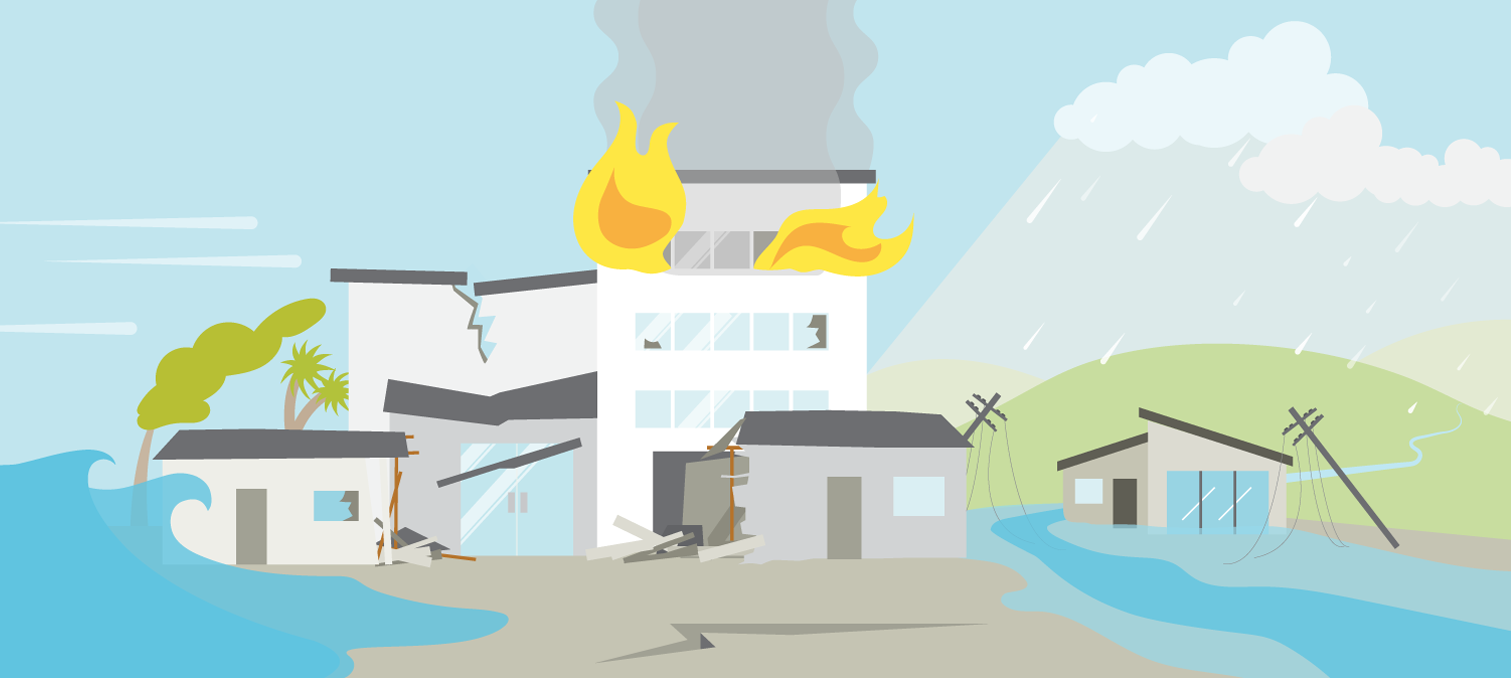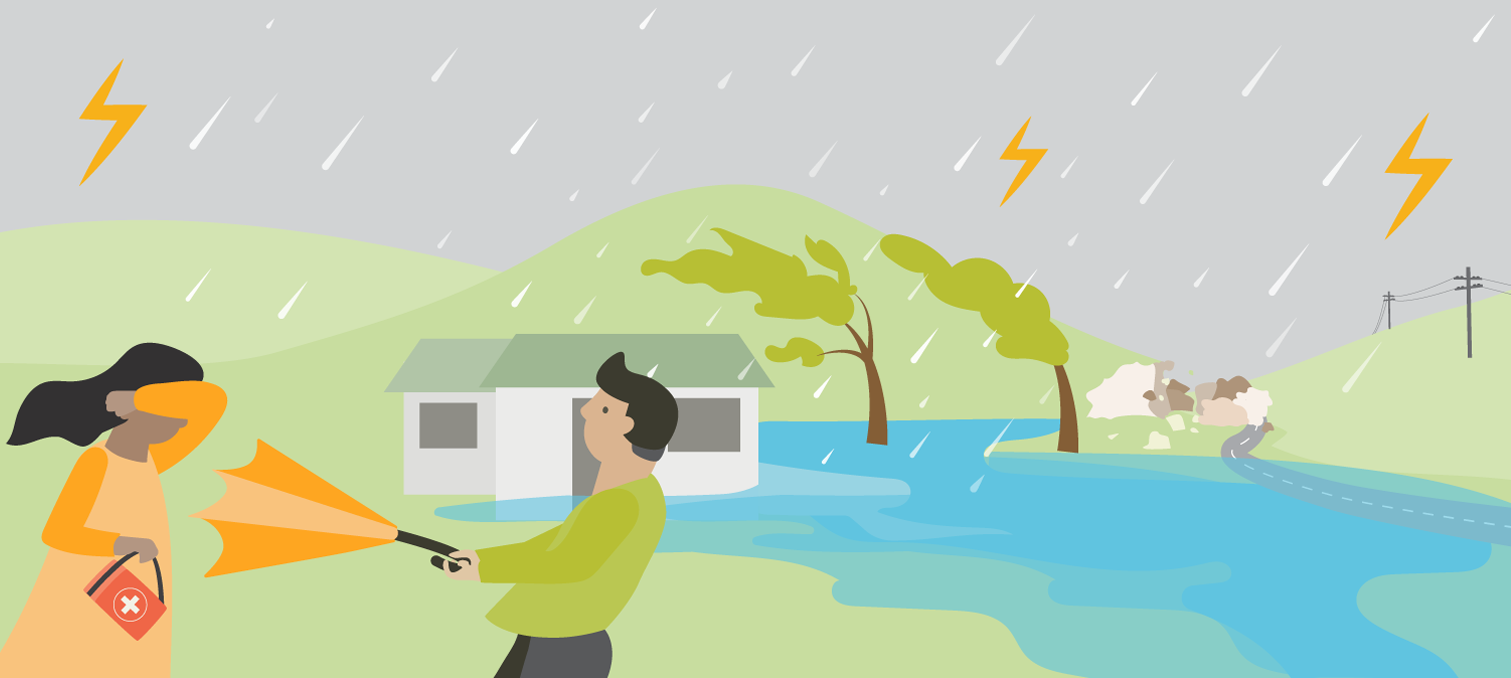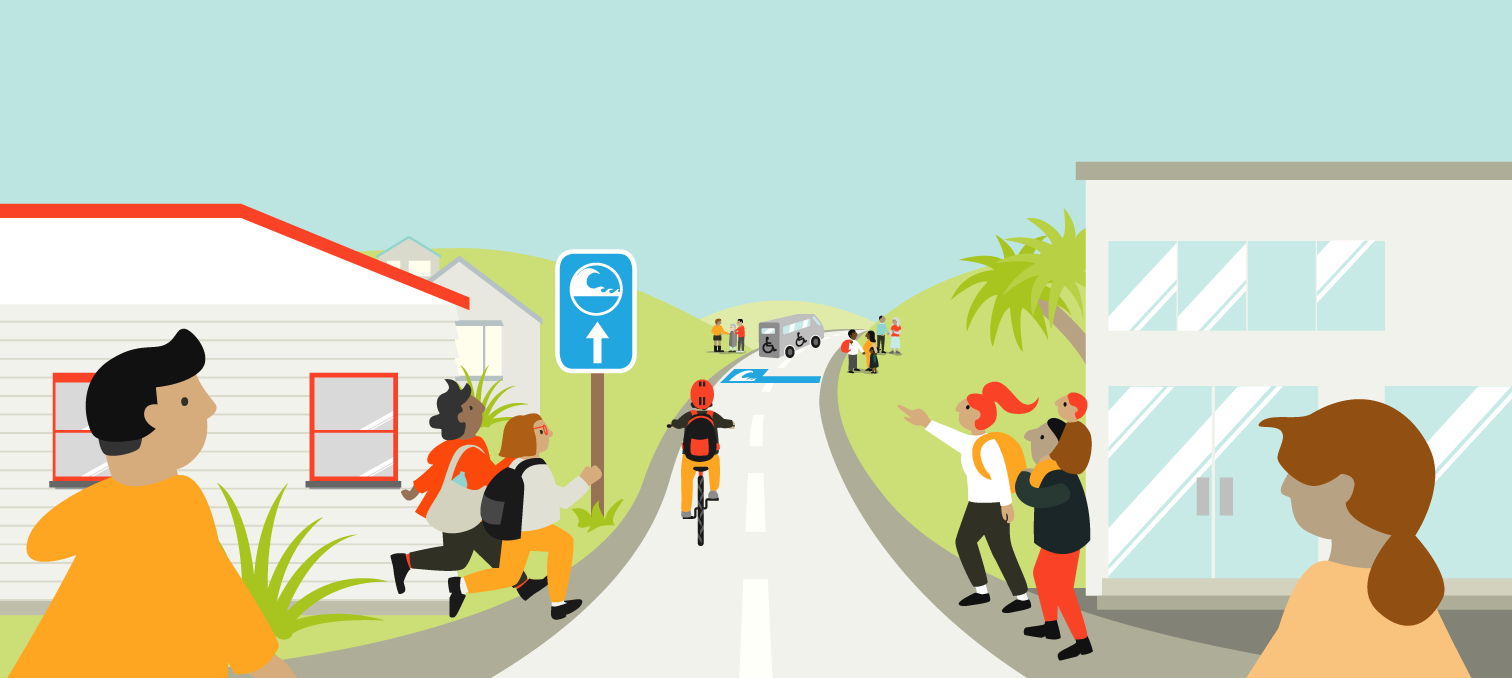
Severe Weather
The Wellington Region often experiences severe weather events such as severe winds, heavy rain, thunderstorms, heavy swells, and road snowfall on the Remutaka Hill. These events have the potential to cause significant damage and disruption. Heavy rain can cause river levels to rise, which can result in flooding.
Learn more
- Severe weather watches and warnings are issued by MetService: www.metservice.com/warnings
- Heavy Swell Warnings are issued by MetService: www.metservice.com
Floods
Floods happen here! Floods are the most frequently occurring natural hazard in the Wellington region. They present a high risk due to the large-scale damage they can cause. Rivers can flood due to high rainfall, and urban areas can be flooded from blocked or inadequate drainage.
Learn more
- For the Wellington Region Flood Hazard Map visit: Greater Wellington Regional Council Flood Map.
- For information on Food Safety during emergencies visit: Food safety in natural disasters and emergencies page at: mpi.govt.nz
Earthquakes
New Zealand sits on the boundary between the Indo-Australian and Pacific tectonic plates, which means we get frequent earthquakes. The main plate boundary passes to the south and east of the North Island. The Wellington region is crossed by a number of major faults, including the Wairarapa, Wellington and Ohariu faults.
Learn more
- When an earthquake occurs: DROP, COVER, HOLD
- If an earthquake is long OR strong, Get Gone!
- To view recent earthquakes, visit: Geonet.org.nz
Tsunami
A tsunami is a series of sea waves or surges caused by a sudden event such as an earthquake beneath, or near the ocean causing the water column to move and a tsunami to form. Tsunami waves travel rapidly through oceans and onshore they can cause widespread damage, injuries, and loss of life. Tsunami form a series of waves that can be spread over a 12-hour period, with waves arriving up to an hour apart.
Learn more
- If an earthquake is long OR strong, Get Gone! A tsunami could be on the way
- Do you live in a tsunami zone? Find out here.
- For tsunami frequently asked questions click here.
Pandemic
A pandemic can occur at any time. On average influenza pandemics occur three times each century. We all need to be prepared for a pandemic to help prevent spread and look after ourselves as best as we can.
Learn more
- For information on COVID-19 visit covid19.govt.nz
- For Greater Wellington COVID-19 information visit www.covid19wellingtonregion.health.nz
- The lead agency for pandemic is the Ministry of Health: www.health.govt.nz